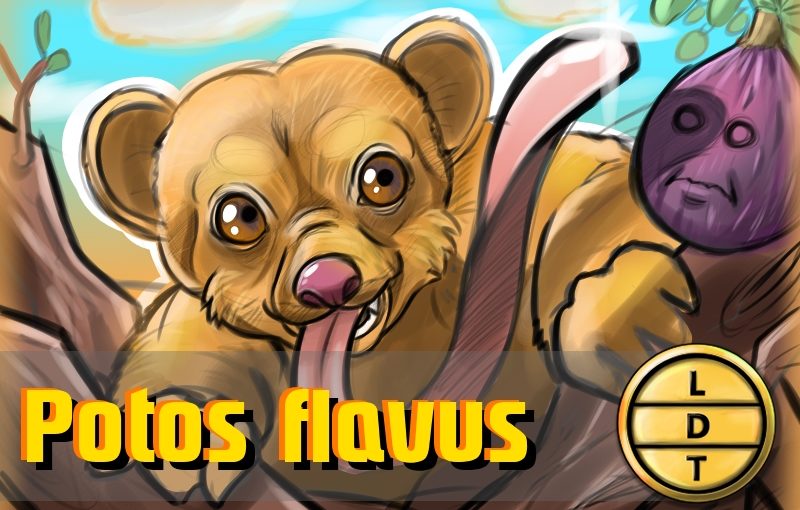“And today we’re talking about a carnivore in name only. But more on that later.”
A seed falls from overhead into the soft soil beneath. It’s buried by a steady rain that lasts all afternoon. It’s growth will mark the beginning of a new tree in the rain forest. But where did that seed come from? A bird? A squirrel? A monkey? No, this one came from an unlikely gardener. A small arboreal carnivore. If her plant takes root and survives, it may one day tower over the other trees in the forest to grant shelter and safety to her descendants. But sometimes it takes an unlikely and unwitting hero to continue the cycle of Life, Death, and Taxonomy.
Measure Up
Welcome to the beloved Measure Up segment. The official listener’s favorite part of the show! The part of the show when we present the animal’s size and dimension in relatable terms through a quiz that’s fun for the whole family. It’s also the part of the show that’s introduced by you when you send in audio of yourself saying, singing, or chittering the words measure up into ldtaxonomy at gmail dot com. We have a new measure up intro this week from one of our good friends Jaimie!
Length
- 40–60 cm (16–24 in)
- 24 inches
- How many kinkajous go into the length of the longest zipline in Mexico?
- Hint: The zipline is nicknamed Big Papa, and it’s located near Puerto Vallarta, Mexico. There are longer ziplines in Peru and Puerto Rico.
- 1,968 kinkajous. The zipline is 1,200 metres (3,937 feet).
Weight
- 1.4–4.6 kg (3–10 lb)
- 10 lbs
- How many kinkajous go into the weight of a large jaguarundi, a type of wildcat that’s native to central and South America and a natural predator to kinkajous.
- Hint: Jaguarundis have been sighted in Florida since 1907. They were also sighted in Georgia in the 80s. No definitive specimens have been killed or captured.
- 2 kinkajous. Jaguarundis can grow to be 20 pounds.
Major Fact: The Procyonidae Pollinator
The Kinkajou plays an important role in the spreading of flora throughout the rainforest.
- Typically, the sewers of the animal kingdoms are birds, bugs, and bats.
- However, the kinkajou’s arboreal lifestyle and diet make a unique animal in terms of seed distribution.
- Kinkajous are in the order carnivora, but they mostly eat fruit.
- They hold fruit in their paws and rake out the soft insides with their tongue.
- While they do this, seeds from the fruit drop to the forest floor below.
- Any seed that the kinkajou consumes makes its way to the ground in droppings, which is basically a case of fertilizer for a seed.
- Many different types of frugivores that consume seeds spread them far and wide. Not many carnivores are fruit distributors. But some are, especially its omnivorous cousins like racoons.
However, kinkajous do something else that helps out plant reproduction.
- They like to eat nectar.
- Their long 5-inch tongue can reach down into flowers to reach nectar.
- Side note: Why is it that every time an animal eats nectar, do they say it “gorges on nectar?”
- It’s just sugar water, not a whole rotisserie chicken
- Anyway, as they gorge on nectar, their noses and faces get covered in pollen.
- When they move on to the next flower, the pollen gets all up in there and cross pollinates the new plant.
- Move over bees, there’s a new florist in town.

